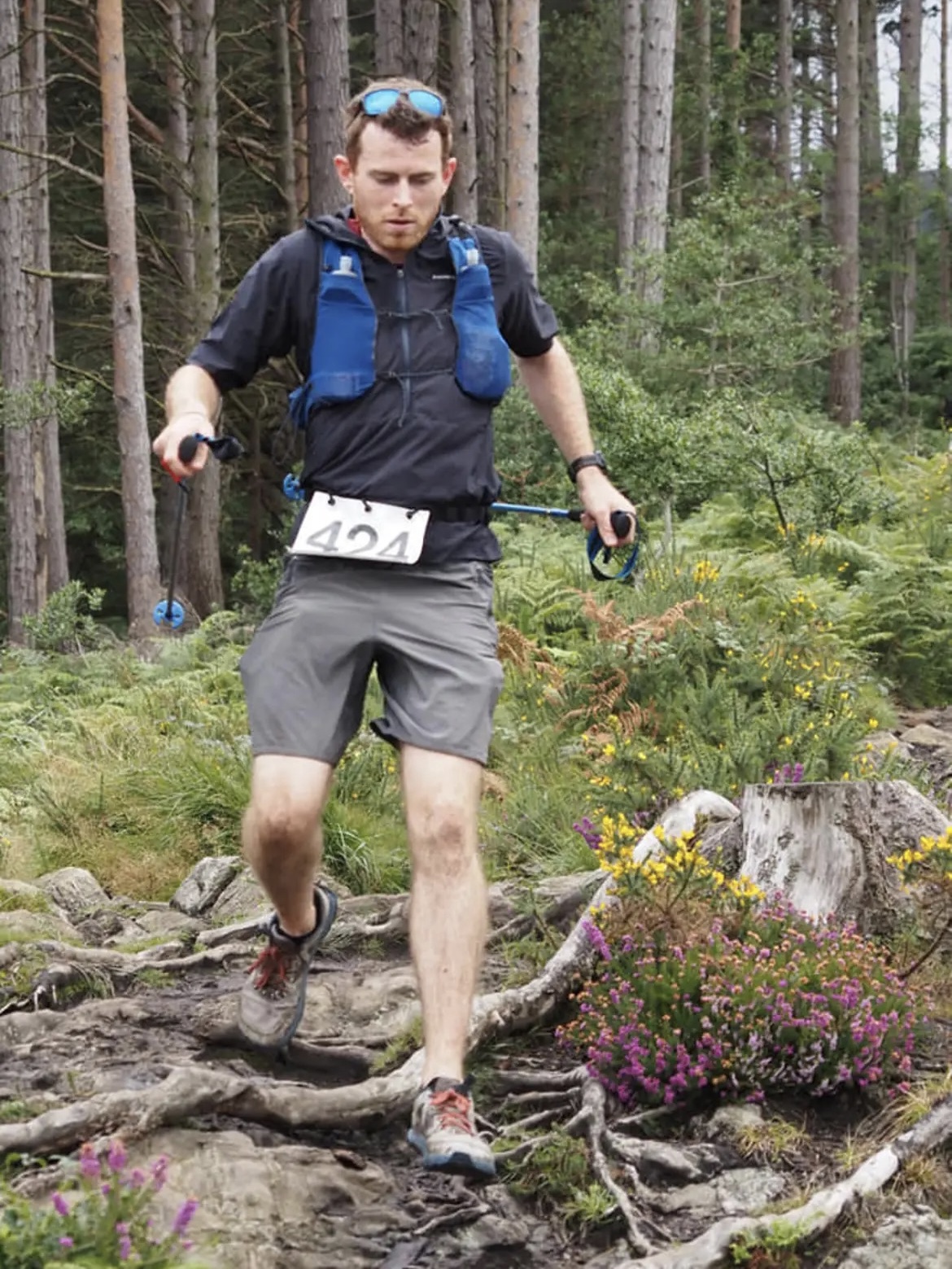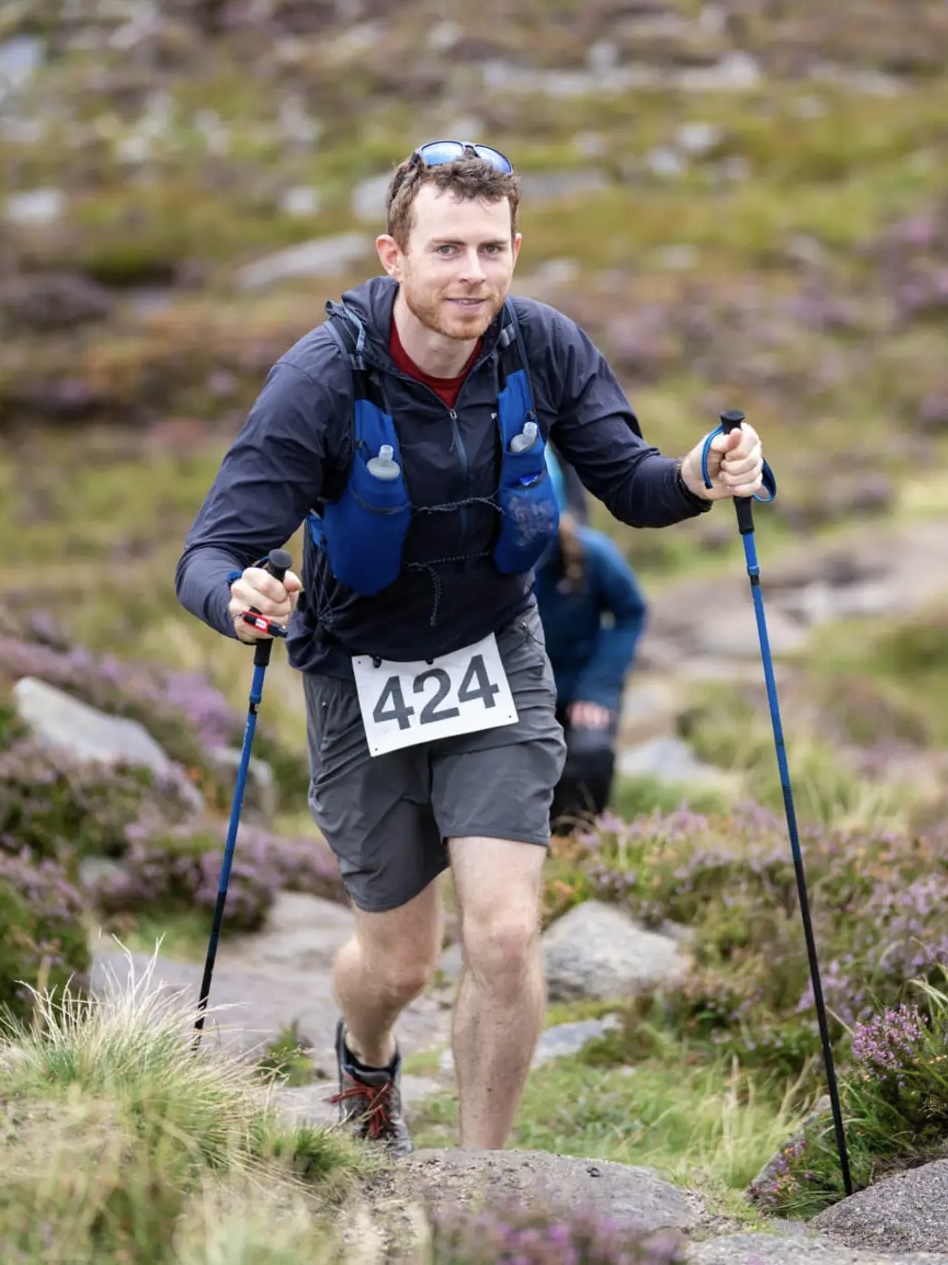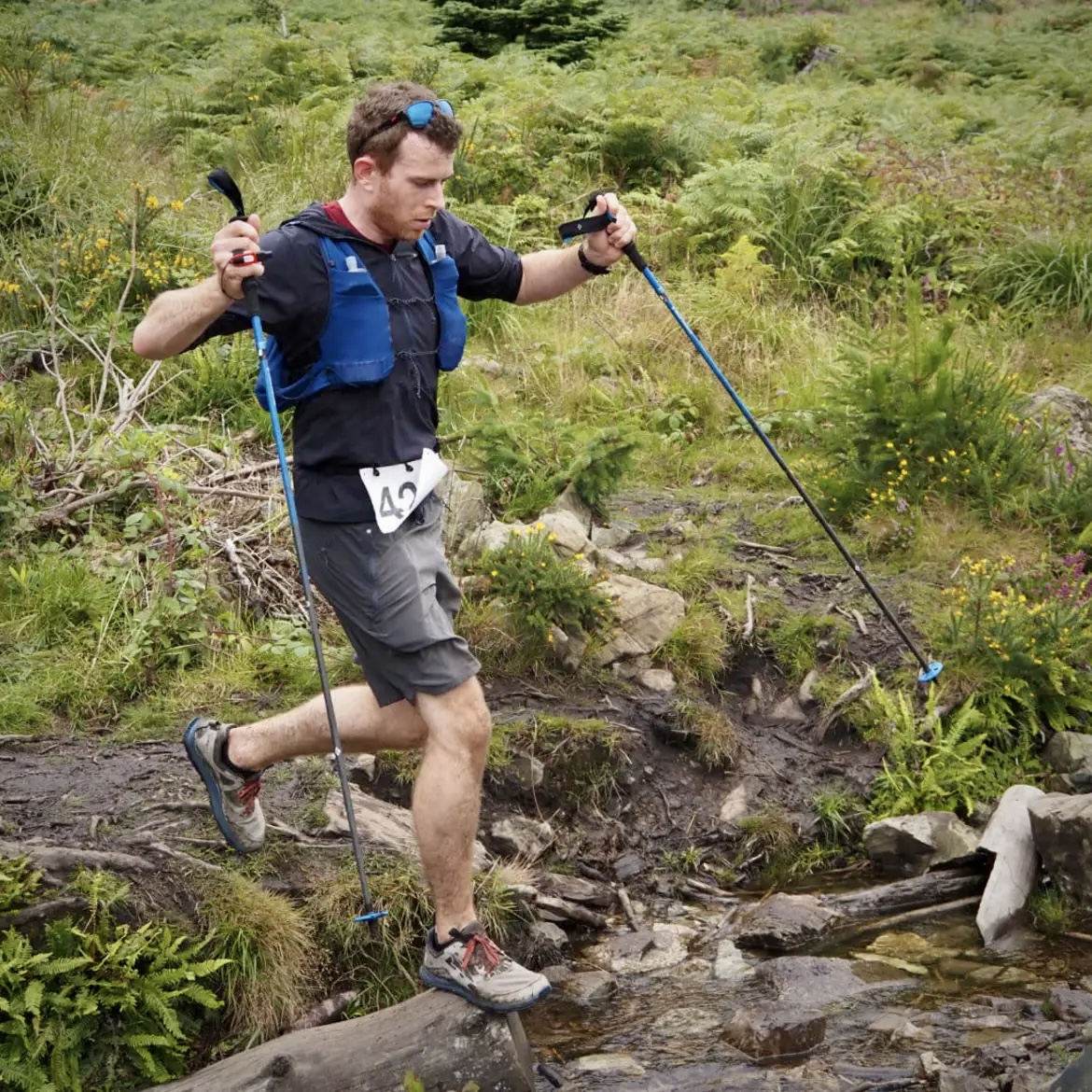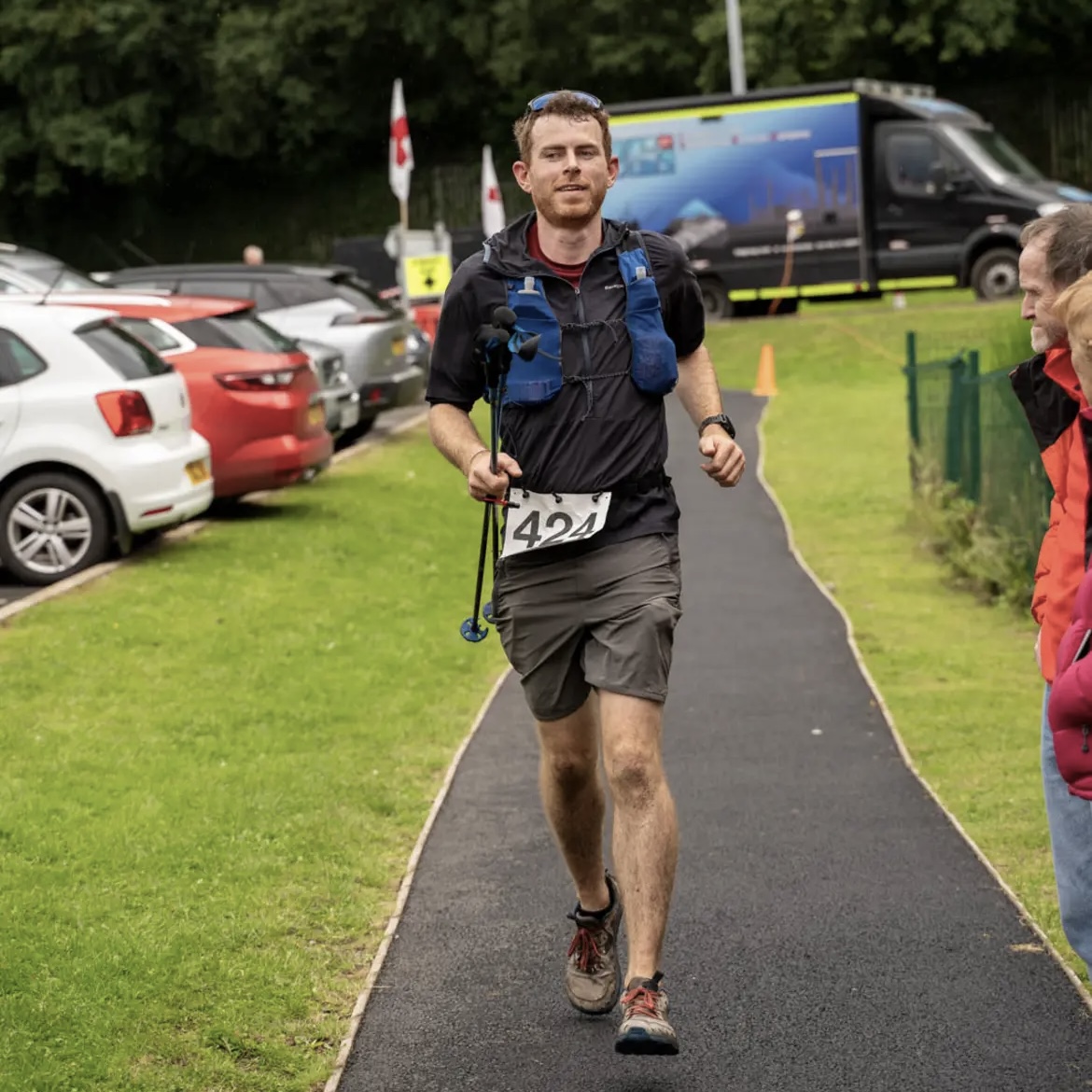Mourne Seven Sevens
- Brian O’Mahony
- Aug 11, 2023
- 5 min read
Updated: Apr 12, 2024
In 1992, fifteen people completed an organised hike that reached all seven peaks above 700m in the Mourne Mountains. This 30km loop with 2,500m of elevation gain tested navigation and stamina, as even today there's no trail for a lot of the route. It culminated with Slieve Donard (850m); the highest peak in Northern Ireland and Ulster, and has since grown into one of Ireland's biggest hiking challenges.
A map update demoted one peak to just below 700m, but the annual event has kept the tradition of the original seven alive. You can enter recreationally as a hiker, or competitively as a trail runner, but regardless must have a map, compass and a bag with the minimum safety kit. The tough terrain is infamously difficult, especially on descents.
This is my experience of completing the trail run in August 2023. My route card below is specific to the peak order for that year, with bearings and distances so I could still navigate with no visibility. The race starts and ends at sea level in the town of Newcastle, and this year followed a clockwise direction that began with the big one; Slieve Donard.

The Mourne's are perfect for mountaineering and are why County Down has more Everest summiters than anywhere else in Ireland. Slieve Donard in particular is one of my favourite hikes in the country; following part of the massive Mourne Wall which crosses most of the peaks. I first climbed it with Scouts when I was 15, and last climbed it less than a year ago. Looking up from the carpark it still seemed as big as ever.
My gear and route card were checked by a marshal, and I was given an orienteering dibber to scan at each summit. It felt very professional the way it attached to one finger. A few people found it funny that I was putting on sunscreen while we hid from a rain shower, but within thirty minutes the sun was out and strong. I ate some final food while nervously discussing the tight cut off times with others, then we moved to the start line. There was a sense of excitement in the air during the race briefing, and all of a sudden we were off.
We ran through forest trails, then along the river that led up to the hills. With no set route, people run in every direction looking for muddy shortcuts. I switched to a fast hike up the main path at a good pace, overtaking those who had started too quickly. After twenty minutes the view opened up to reveal Slieve Donard. Normally I would hike to the main saddle, then follow the Mourne Wall up to the peak, but instead the group began to split. Half crossed a river, presumably to take a straight line up the steep side. I couldn't see a route and hadn't planned it, but surely it was faster, so I followed.
It was definitely direct, I'll give them that. Very wet, and at times a climb with your hands, but clearly faster. The steepness had everyone huffing and puffing, but less distance and more climbing suits me. Towards the top it levelled off, allowing me to appreciate the view back to the town and the ocean beyond. The heat was already intense, but wind and cloud cover on the summit provided relief. I sped up for the last push, with a time of just under one hour to the first peak; Slieve Donard (850m).
From here I followed the Mourne Wall for a fast descent to the usual saddle, coming against everyone who hadn't crossed the river. Then a steep climb up the other side to the second peak; Slieve Commedagh (765m). The summit was high in a cloud, making it hard to tell how far was left. After a tough effort against strong wind, I turned to go back down to the saddle. On the way I noticed others climbing over the wall to take a more steep and direct route once again. I was getting the idea now and followed.
From here was a mix of rugged trails and heather slopes to cross over a long ridge. One of the steepest climbs was right at the end to get up our third peak; Slieve Lamagan (756m). The descent on this hurt my knees, side stepping down the steep and loose rocks. I wished I had a knee support and had to walk for a while after, focusing on bending the knee correctly to help it.
Ahead of us was the south west ridge, which looked foggier and stormier than everything before. I was worried about my knee so I took it slow on the climb up, only running for brief periods to reach the far end and our fourth peak; Slieve Binnian (747m). This marked the halfway point.
The wind helped me run more on my way back down the ridge. We descended out of the fog, back to the same calm area we were in almost an hour before. There was a big group of hikers having lunch there now, but I had to keep the pace up to reach the dam before 2:00pm. This has the only access road to the route, and so it's the midway cut-off for runners. I crossed the dam at 1:30pm, roughly in the middle of the pack. I was so relieved to have done so, as the finish cut-off is far less tight.
Now for the most rough terrain. A shoe stealing bog where you run through streams for thirty minutes of slipping and sliding uphill. Some people are covered head to toe in mud and everyone moves slow. Towards the end it begins to dry as you reach the Mourne Wall and follow it to the top of peak five; Slieve Meelbeg (702m). Continuing brought you down into a deep saddle, and up to peak six; Slieve Meelmore (688m). On this summit, most people had a hard time climbing over the wall to scan in with the wind. I was happy to descend away from there after.
My knee felt much better now and I was able to run the descent where the terrain allowed. The Mourne Wall led once again up a climb to peak seven; Slieve Bearnagh (791m). I did some extra scrambling trying to find the summit in the fog, but after realising it was way more straightforward than I thought, I was scanned in and jogging back towards the finish. The section from here back to the first saddle was particularly beautiful, and had great footing with a slight downhill most the way. Once I got onto the saddle I asked someone to take a photo of me with Slieve Donard behind, and felt so excited to have no more climbing left.
The descent was great. Big stone steps and nice forest trails that were fun to run on. I pushed hard to stay with the person ahead of me the whole way down which had my heart ready to explode, but was doable with all the downhill. I was breathing heavy for the last few kilometres as we approached the town, but pushed hard to the carpark and under the finish line.
6hrs 41mins 26s
I couldn't be happier with how the race went. There was great food and drinks at the finish line, where I sat and talked with others about the sun, wind and steepness. I especially bonded with the few others who had ran with poles, making everyone jealous as we pushed ourselves up each climb. This day gave me a real appreciation for the difficulty of mountain running compared to ordinary trails, and my need for knee support on rough terrain. I was scheduled to double the distance in a months time at the Seven Sisters Skyline in Donegal. That race was fresh on my my mind as I drove away, proud in what I'd done but nervously wondering what that day would bring.










































Comments